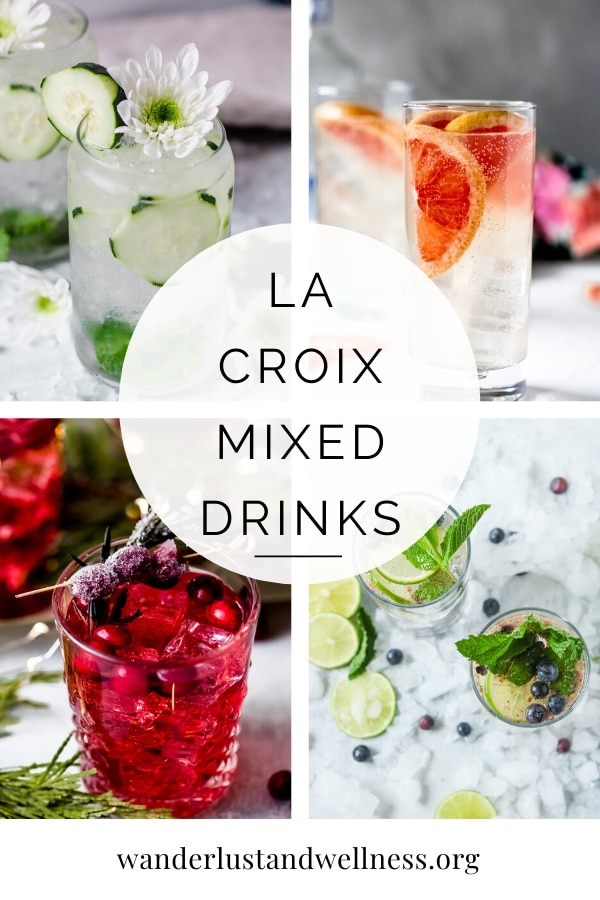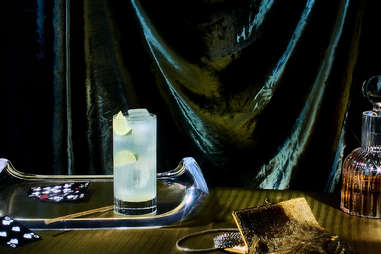
There are many different ways you can make cocktails. However, there are some guidelines you need to keep in mind. It is important to create a balanced cocktail that's not too strong or boring. If you know the rules, you can make a delicious drink that you and your friends will enjoy.
The alcohol is the most important ingredient in a cocktail. A strong alcohol should be chosen. A margarita is made with vodka, for example. A sour cocktail is one that contains gin and rum. A sour cocktail is made from citrus fruits. Sour cocktails are often served shaken. This is because the ice is added to the mix and helps to dilute any alcohol. You can also use a carbonated mixer if you don’t want to use ice.
A sweetener is another ingredient that can be added to a cocktail. Sugar, syrup, and simple syrups can all be used in a cocktail. An ideal sugar-to–alcohol ratio is 2:1 sugar to 1 alcohol. Agave nectar is also an option. However, it is usually best to use plain syrup.

Mixer is the next ingredient you can add to a cocktail. Mixers can be soda water as well as fruit juice. Mixers are useful for giving your drink a tangy flavor. Use them with moderation. Too much mixer can overpower your cocktail. You might find your drink becomes watery if there isn't enough mixer.
Your seasoner is the last element you can add to a cocktail. Citrus fruits can be used as your seasoner. These fruits will add flavor and scent to your cocktail. Citrus peels or orange peels can be used to garnish your drink. You can also use mint leaves or even a muddled mint to make a mojito.
It takes time and effort to make cocktails. However, it can also give you a sense of accomplishment. Making your own cocktails is a great way to save money. When you are building cocktails from scratch, you can choose your own alcohol brands. This gives you complete control over what flavors are used in your drink.
You should not skimp on the quality of ice. Over-using ice can cause your drink to taste bitter. Also, you'll need more ice to keep it cool. You should always have an ice bucket on hand when you're making cocktails. This will allow your to go through a lot ice in one session. A bad hangover can result if you don't eat enough ice.

When measuring ingredients, you should use a double sided jigger. Depending on the recipe, you may need to use more or less ice. This will allow you to achieve a balanced ratio between alcohol and other ingredients.
FAQ
What is the difference of a shaker and blender?
Shakers are made from metal and can come in a variety of sizes. Blenders are generally made of plastic and come with a variety shapes.
What do I do if my cocktail gets too hot?
If you are worried about getting your drinks too hot when they come out of the freezer, put them into the fridge for 5 minutes before serving. They won't need to heat as quickly.
What's the best drink a girl can order in a bar?
The best drink for a girl at a bar is old-fashioned. It's made with whiskey water, sugar, and even ice.
The old-fashioned was invented by Thomas Handy in 1876. His invention was named for a horse race he used on Long Island.
What does it mean when someone declares, "I have a little too many fun?"
This means the person has had too many drinks.
What's the most delicious cocktail?
Fresh ingredients make the most delicious cocktails. They should have an interesting taste profile and be well-balanced.
The most important thing when mixing drinks is to use quality spirits. If you use cheap vodka, it is better to just drink water.
Statistics
- According to a post on Quora, the average bartender can make upward of 140 drinks per hour. (gloworder.com)
- It is customary to leave a tip of 10-20% of the bill total. (boguesounddistillery.com)
- You can simply follow the rule of thumb: $1/beer or wine, $2/ cocktail, and 10-20% for large tabs. (alembicbar.com)
- American blended whiskeys are so inexpensive because they only have to contain 20 percent whiskey; the rest can be made up of neutral grain spirits, colorings, and flavorings. (mashed.com)
External Links
How To
Favorite Drinks For Beginners
Favorite Drinks to Starters
A beginner is someone just beginning to drink alcohol. A beginner typically drinks one beer per day, usually while watching television or playing games. A beginner is not experienced in drinking alcohol.
The first step in becoming a good drinker is to learn what you like and don't like. Try different types of alcoholic drinks. Try different brands. You may like a flavor so you can keep buying it until you find the perfect one. Once you know what you like, then you can start experimenting with different kinds of alcoholic beverages.
To be a good shopper, you need to understand the difference between non-alcoholic drinks and alcoholic beverages. Alcoholic beverages contain alcohol. Non-alcoholic beverages are free from alcohol. Beer is alcoholic. Wine contains alcohol. Whiskey contains alcohol. Vodka contains alcohol. Gin contains alcohol. Rum contains alcohol. Tequila contains alcohol. Brandy has alcohol. Bourbon whiskey has alcohol. Scotch whisky contains alcohol. Whisky contains alcohol. Cognac has alcohol. Champagne contains alcohol.
Pregnant women should not consume alcohol. Drinking alcohol during pregnancy can cause birth defects. It can also lead you to miscarriage.
It's addictive. You can get drunk if your alcohol intake is excessive. Drunkenness can cause you to make poor decisions and be foolish. Alcoholism can develop when you drink too frequently.
There are many ways to enjoy alcoholic beverages. Some people prefer to drink alone. Some people prefer having friends around them. Others prefer to be with their family. No matter what way you choose, there is no right or incorrect way to drink.
Moderation is key when you consume alcohol. Moderation is a limit of one drink per day. 1 drink equals 1/2 ounce (14g) pure alcohol. If you have 2 beers, 3/4 of an ounce (28g) of pure alcohol will make you feel tippy.
In conclusion, I'd say alcohol knowledge is key to being a good drinker. It is important to test out different types and find which you enjoy the best. Next, you should practice moderation.